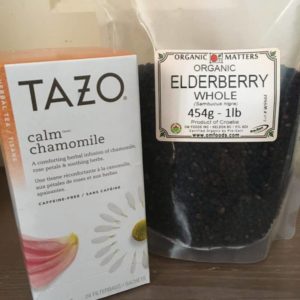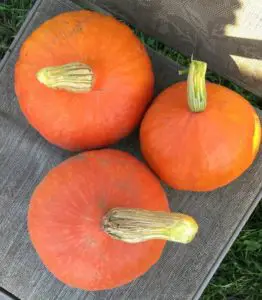One homestead skill I’ve been so excited to learn is making handmade soaps like pumpkin hand soap.
A blog I adore for soap making and soap recipes is the Nerdy Farm Wife which is why I’m thrilled today to have Jan Berry offer this Simple Pumpkin Soap Recipe from her latest book Simple & Natural Soapmaking. This book is gorgeous and contains amazing recipes and techniques.
Pumpkin Soap Recipe
Loaded with vitamin A and other nourishing nutrients, real pumpkin puree gives this soap its natural yellow-orange color. Both homemade puree and canned pumpkin work equally well; if neither is available, try using butternut squash instead.
Makes 7 to 8 bars (2.5 lbs/1.13 kg)
| Servings |
|
- Lye Solution
- 3.95 oz Sodium Hydroxide (also called Lye or Caustic Soda)
- 6.5 oz distilled water
- Solid Oils
- 8 oz Coconut Oil (227 g)
- 4 oz Shea or Mango Butter (113 g)
- 12 oz olive oil (340g)
- 4 oz Sunflower or Sweet Almond Oil (113 g)
- 2.5 oz Pumpkin Puree (71 g)
Ingredients
|
|
- Wearing protective gloves and eyewear, carefully stir the lye (sodium hydroxide) into the distilled water until dissolved. Work in an area with good ventilation and be careful not to breathe in the fumes. Set the lye solution aside to cool for about 30 or 40 minutes or until the temperature drops to around 100 to 110°F (38 to 43°C).
- Gently heat the coconut oil and shea or mango butter on low heat until melted. When the solid oils are melted, take the pan off the heat and pour in the liquid oils. This helps cool down the melted oils, while warming up the room temperature oils.
- Add the pumpkin puree to the warmed oils and blend well with an immersion blender (stick blender). Pour the cooled lye solution into the warmed oils/pumpkin mixture. Using a combination of hand stirring and an immersion blender, stir the soap batter until it thickens and reaches trace. Trace is when the soap has thickened enough so when you drizzle a small amount of the batter across the surface, it will leave a fleeting, but visible imprint or trace before sinking back in.
- Pour the soap batter into your soap mold. Cover lightly with wax or freezer paper, then a towel or light blanket. Peek at the soap every so often; if it starts developing a crack, uncover and move to a cooler location.
- Keep the soap in the mold for 1 to 2 days, or until it’s easy to remove, then slice it into bars when it’s firm enough not to stick to your cutting tool. Cure on coated cooling racks or sheets of wax paper for about 4 weeks before using. The soap is safe to touch 48 hours after making it but it needs the extra time to allow the excess moisture to evaporate out.
If you don’t have shea or mango butter, try using cocoa or kokum butter, tallow or lard for a similar effect. To further enhance the recipe, you could add 1 tbsp ground oats (at trace) and/or 1 tbsp dried milk powder (with the pumpkin). All oils, butters, water, lye and pumpkin should be measured by weight. You need an accurate scale to make soap.












Soap making is something I really want to try this winter and with all the pumpkins I grew this year, I can’t wait to try this recipe! Thanks for sharing!
If you got the recipe from the book you really should not exchange one oil for another. It will have a different saponification factor. It could result in too much lye in the soap. It can be caustic (burn your shin).
This was a guest post from the woman that wrote the book, Jan Barry. I’ll ask her further info on this.
Hi Leona! Yes, it’s always good to run a recipe through a lye calculator before making changes. In this case, I already verified all of the substitution tips in the book and made sure the lye amount remained within a safe level, so feel free to use any of the substitutions listed. 🙂
Could you add pumpkin spice mix to it?
Hi Liza! You could add a little bit of pumpkin spice blend for texture and visual appeal, but it won’t add scent to the final soap. For that, you could add a small amount of clove and cinnamon essential oil. (Up to 6 grams total for a recipe that size – both of those essential oils can sensitize skin at a higher rate & will also make the soap thicken a lot faster, so mix fast & be ready to pour into the mold.) 🙂
Hello ,
just made this soap. thank you for the recipe..
question tho. this is the 1st soap I have made without using castor oil for lather.
Does the sunflower take the place of it ?
thanks ,Lisa
Hi Lisa! Castor oil is wonderful for adding lather to soap – I love using it in soap recipes too! In this case, the sunflower oil isn’t used as a substitute for castor, but it does add a nice conditioning lather to soaps. If you wanted to use castor oil for extra bubbles, I’d swap out around 1.5 oz of the olive oil for castor (checking with a lye calculator to see if the lye amount needs adjusting.) 🙂
What is the shelf life of this soap since it has the pumpkin in it?
Hi Linda! The high pH of soap acts as a preservative of sorts, so that soaps made with milk, veggies, fruits, etc should have a similar shelf life to regular soaps. Just make sure to use smooth purees (or juices) since any large pieces of unblended fruit/veggie could mold in a soap.
Is there a difference in the type of olive oil used? ie extra virgin vs light olive oil
You can use both, it will offer a different color the extra virgin being darker & richer. 🙂
I am a new soap maker from oman
I really like your recipe😍
I am going to try it soooon
Thanks alot.
You’re welcome! Happy soap making 🙂
Hi there. I’ve tried making lye solution for this recipe twice. My lye will not fully dissolve. I’ve never had this issue before. Any idea as to what’s going on?
Hi.
I have two questions for you or Jan. Why didn’t you put in any essential oil in this recipe? And should it be made to go thru gel stage or not?
How big is your mold?
I made this soap today and it came out really thick even though I only used a mixer until trace.
The scale I used only weighs at 3.5 or 4.0, so I had to guestimate the 3.95 oz of lye, and I added essential oils. The soap is still in the molds but I have peeked and it is setting but isn’t formed to the molds and is not a smooth pretty bar. Could either of the above details made a difference in the setting up?